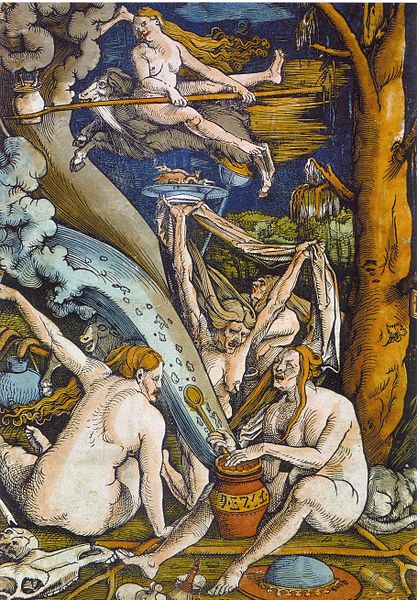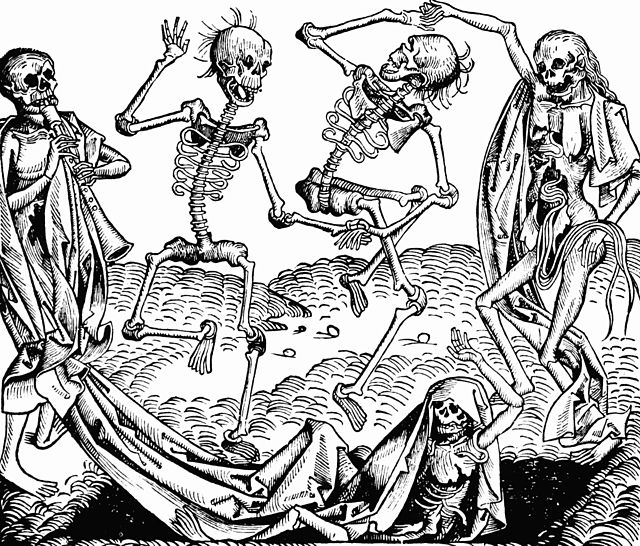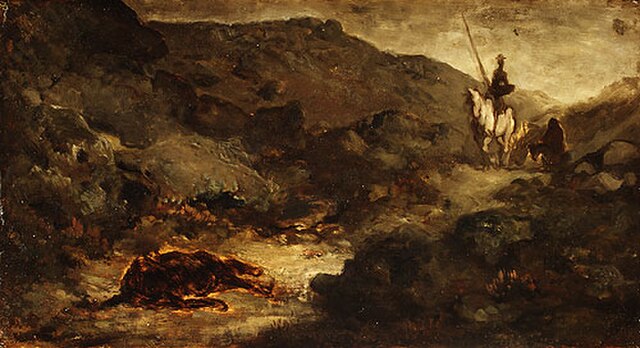A symphonic poem or tone poem is a piece of orchestral music, usually in a single continuous movement, which illustrates or evokes the content of a poem, short story, novel, painting, landscape, or other (non-musical) source. The German term Tondichtung appears to have been first used by the composer Carl Loewe in 1828. The Hungarian composer Franz Liszt first applied the term Symphonische Dichtung to his 13 works in this vein, which commenced in 1848.
Vyšehrad over the Vltava River, evoked musically in the first poem of Smetana's Má vlast.
Hans Baldung Grien, Witches, woodcut, 1508. Mussorgsky's Night on Bald Mountain was meant to evoke a witches' sabbath.
Michael Wolgemut, The Dance of Death (1493) from the Liber chronicarum by Hartmann Schedel, evoked musically in Saint-Saëns' Danse macabre.
Honoré Daumier, Painting of Don Quixote, c. 1855–1865
Johann Carl Gottfried Loewe, usually called Carl Loewe, was a German composer, tenor singer and conductor. In his lifetime, his songs ("Balladen") were well enough known for some to call him the "Schubert of North Germany", and Hugo Wolf came to admire his work. He is less known today, but his ballads and songs, which number over 400, are occasionally performed.
Carl Loewe





